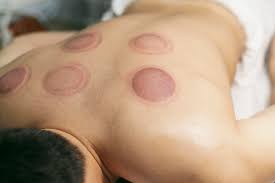In the pursuit of holistic health and wellness, individuals are increasingly turning to alternative therapies and ancient practices to complement conventional medicine. Hijama treatment, also known as cupping therapy, is one such practice that has gained popularity for its potential to promote overall well-being. This article delves into the essence of Hijama treatment, exploring its origins, techniques, benefits, and considerations for those seeking to integrate it into their health regimen.

Origins of Hijama Treatment
Hijama treatment traces its roots back to ancient civilizations, where it was practiced as a traditional healing modality across various cultures, including Chinese, Egyptian, and Islamic civilizations. The term "Hijama" is derived from the Arabic word "hajm," which means "sucking." It involves the application of cups to specific points on the body to create suction, drawing out impurities and promoting blood flow. Historically, Hijama treatment was believed to balance the body's vital energies and restore health.
Understanding the Technique
The technique of Hijama treatment involves the placement of cups on the skin, typically made of glass, plastic, or silicone, which are then suctioned to create a vacuum effect. This process creates a localized pressure that draws blood to the surface of the skin, facilitating the removal of toxins and metabolic waste products. Depending on the individual's condition and the practitioner's expertise, Hijama treatment may be performed at various points on the body, corresponding to meridian lines or specific anatomical landmarks.
Benefits of Hijama Treatment
The potential benefits of Hijama treatment encompass a wide range of physical, mental, and emotional aspects of health. One of the primary advantages is its ability to improve blood circulation and lymphatic drainage, which can aid in detoxification and enhance the body's natural healing mechanisms. Additionally, Hijama treatment is believed to alleviate musculoskeletal pain and inflammation, making it particularly beneficial for individuals with chronic conditions such as arthritis or back pain.
**Furthermore, Hijama treatment is purported to boost the immune system and promote overall vitality, helping the body resist illness and maintain optimal health. Some proponents also suggest that Hijama treatment can have a positive impact on mental well-being by reducing stress, anxiety, and depression. By encouraging the release of endorphins and promoting relaxation, it may contribute to a sense of calm and emotional balance.
Considerations for Practicing Hijama Treatment
While Hijama treatment offers potential health benefits, it is essential to approach it with caution and awareness of certain considerations. Firstly, Hijama treatment should be performed by trained and qualified practitioners who adhere to proper hygiene and safety protocols. This ensures the risk of infection or injury is minimized and that the treatment is conducted in a professional manner.
**Additionally, individuals considering Hijama treatment should consult with a healthcare provider to assess its suitability for their specific health needs and medical history. While Hijama treatment is generally considered safe for most people, certain contraindications may apply, particularly for individuals with underlying medical conditions or those taking medications that affect blood clotting.
Conclusion
In conclusion, Hijama treatment offers a holistic approach to health and wellness, drawing upon ancient wisdom and traditional healing practices. By harnessing the potential of suction therapy, Hijama treatment aims to promote balance and vitality within the body, addressing both physical ailments and emotional well-being. While further research is needed to fully understand its mechanisms and efficacy, many individuals have experienced positive results and enhanced quality of life through Hijama treatment. As with any complementary therapy, it is essential to approach it mindfully, seeking guidance from qualified practitioners and integrating it into a comprehensive health regimen tailored to individual needs.
